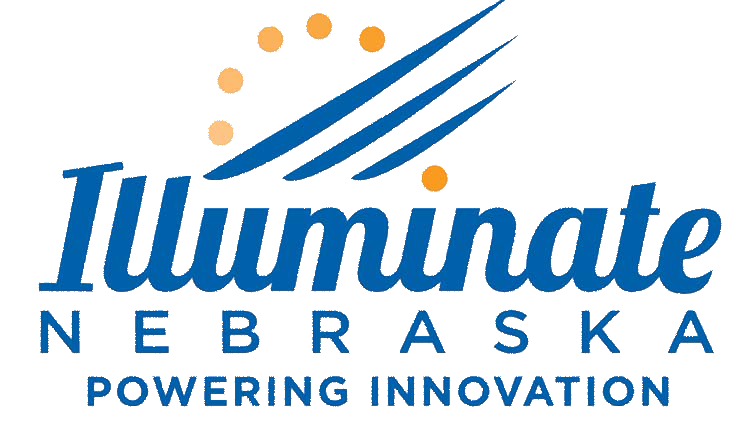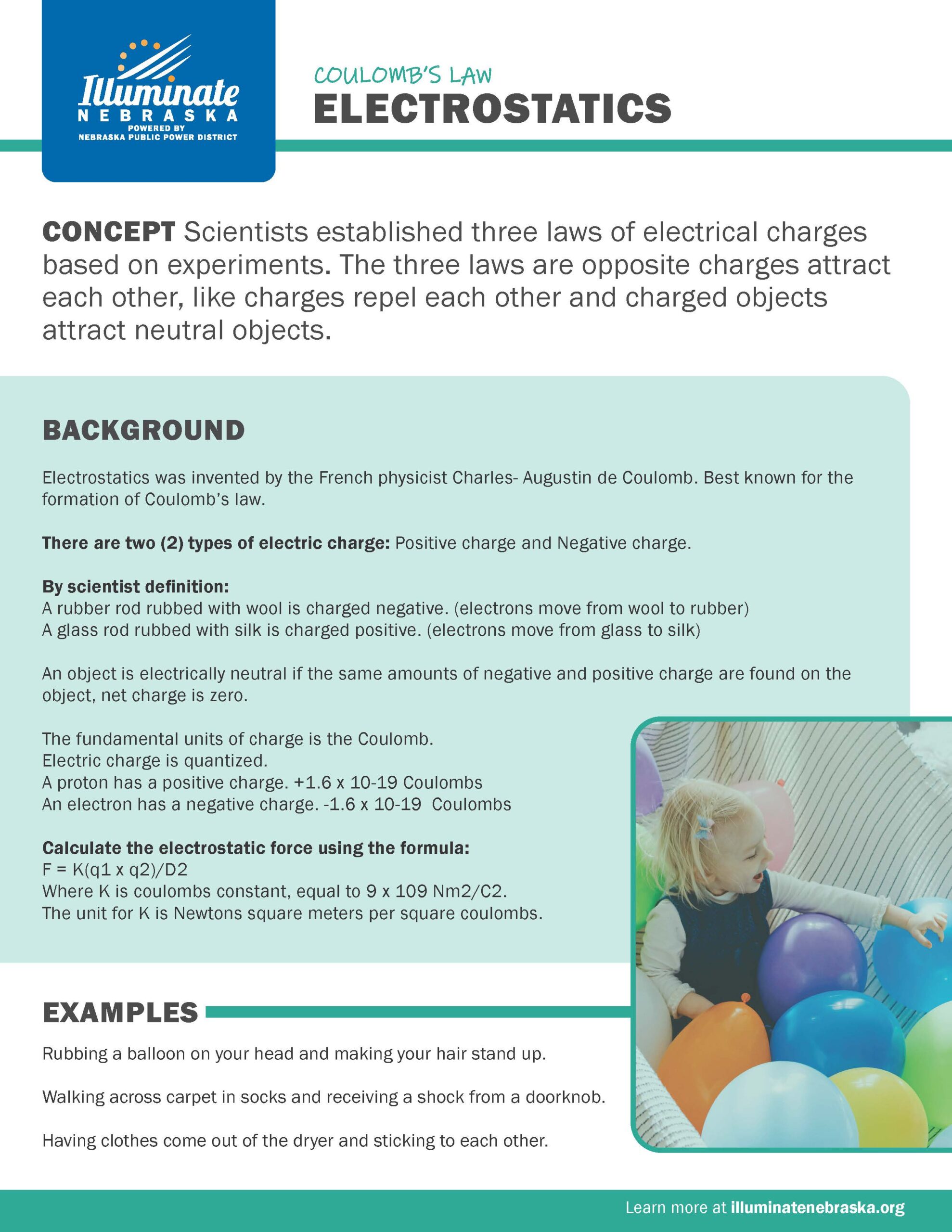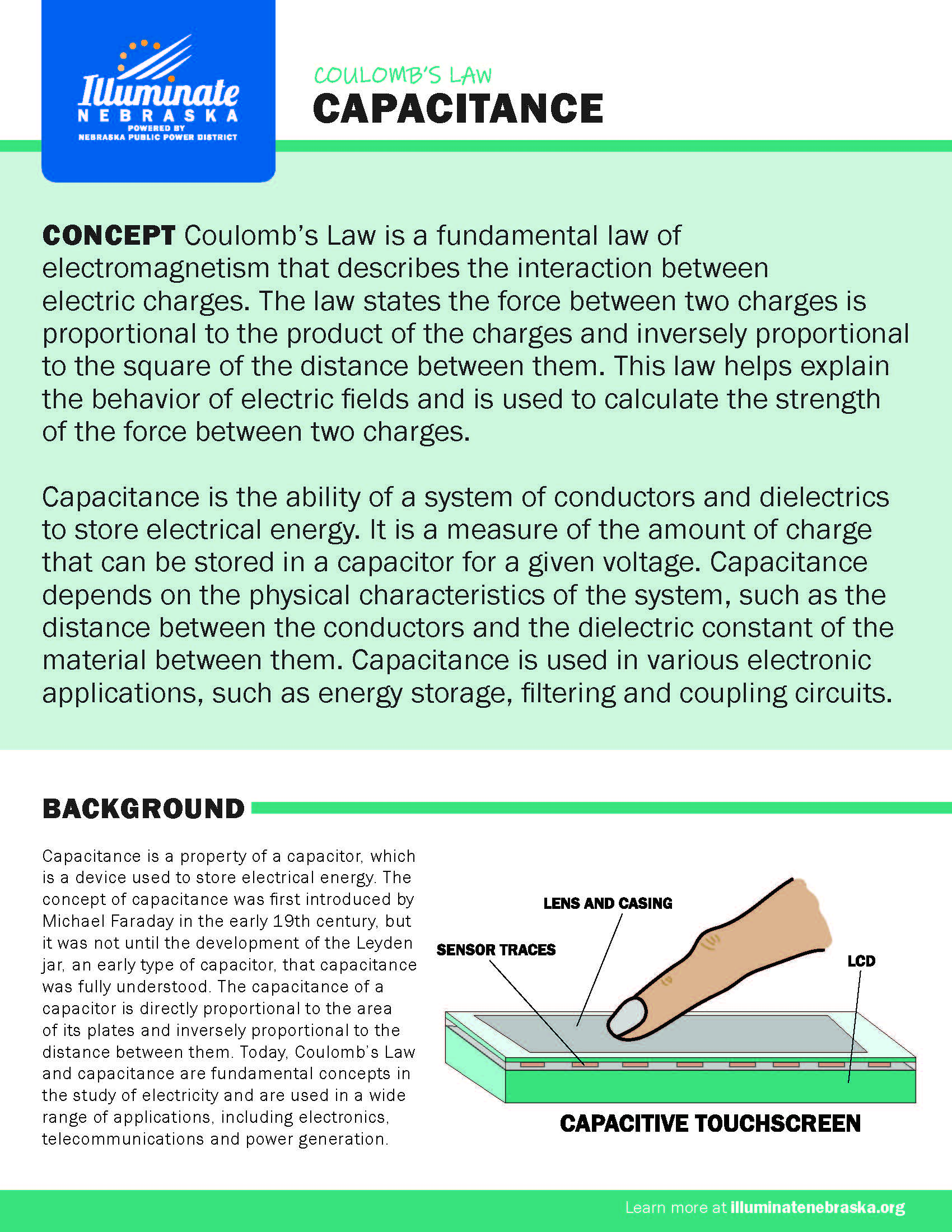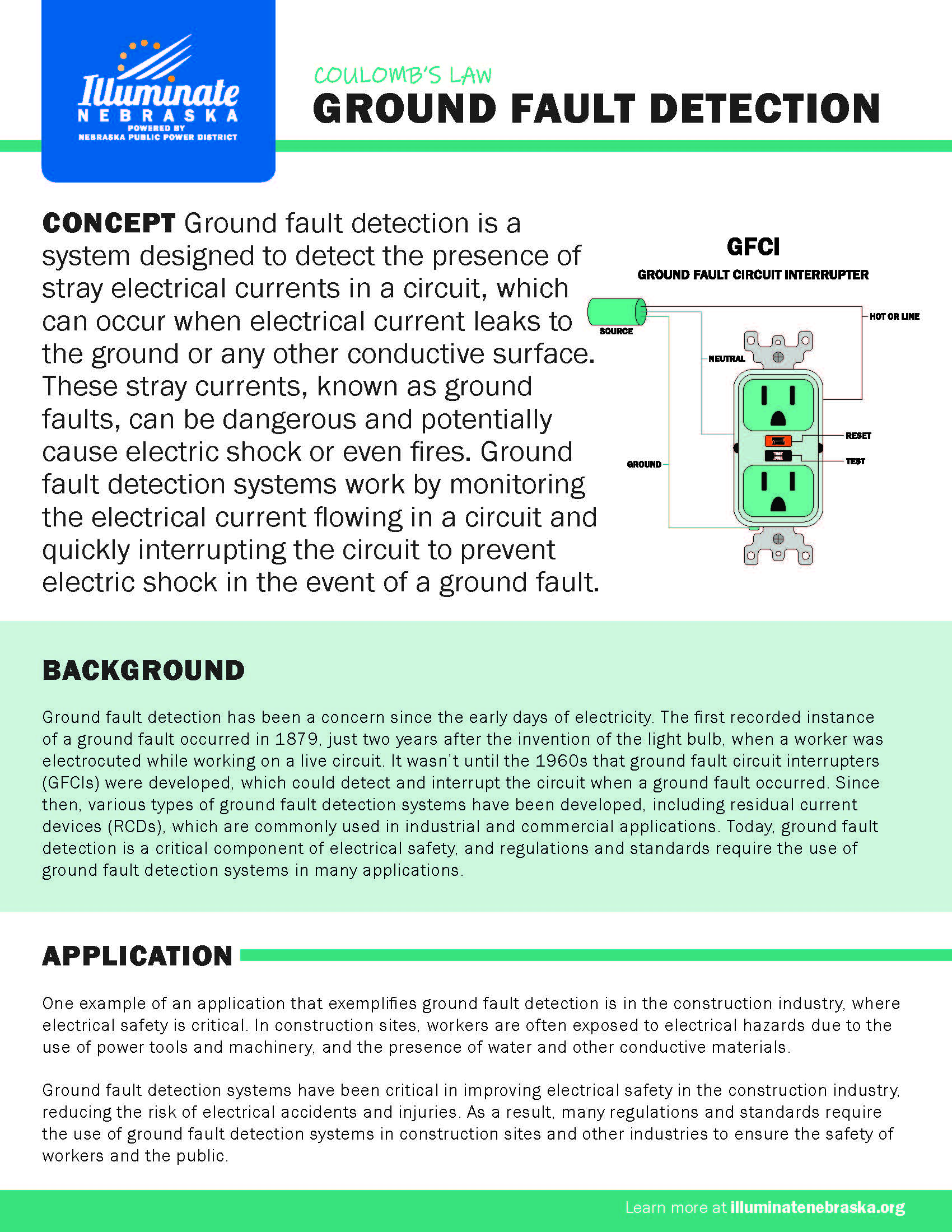Electrostatics
Scientists established three laws of electrical charges based on experiments. The three laws are opposite charges attract each other, like charges repel each other and charged objects attract neutral objects.
Capacitance
Coulomb’s Law is a fundamental law of electromagnetism that describes the interaction between electric charges. The law states the force between two charges is proportional to the product of the charges and inversely proportional to the square of the distance between them. This law helps explain the behavior of electric fields and is used to calculate the strength of the force between two charges.
Coulomb’s Formula
Coming Soon!
Ground Fault Detection
Ground fault detection is a system designed to detect the presence of stray electrical currents in a circuit, which can occur when electrical current leaks to the ground or any other conductive surface. These stray currents, known as ground faults, can be dangerous and potentially cause electric shock or even fires. Ground fault detection systems work by monitoring the electrical current flowing in a circuit and quickly interrupting the circuit to prevent electric shock in the event of a ground fault.
Battery Storage
In a battery, electric charge is stored in the form of chemical energy, which can be converted into electrical energy when the battery is used. The amount of charge stored in a battery is related to its capacity, which is measured in ampere-hours (Ah).




